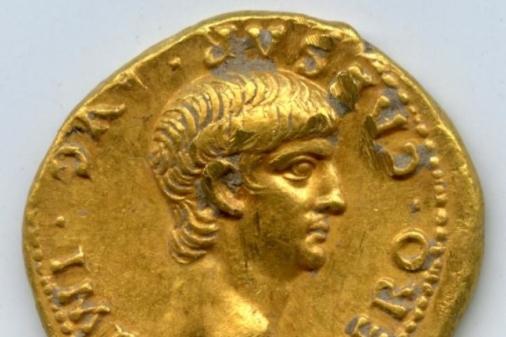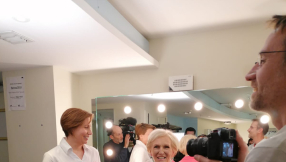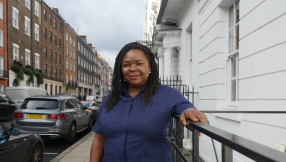
An exceptionally rare gold coin emblazoned with the face of the Roman Emperor Nero dating back to around A.D. 60 has been discovered by archaeologists working on excavations on Mount Zion in Jerusalem.
The coin, which archaeologists say most likely came from a Jewish home, was found in the ruins of wealthy villas from the first century A.D. and according to the archaeologist Shimon Gibson "belonged to the priestly and aristocratic quarter located in the Upper City of Jerusalem".
Gibson, who is an adjunct professor at the University of North Carolina at Charlotte and part of the team carrying out the excavations, said: "The coin is exceptional because this is the first time that a coin of this kind has turned up in Jerusalem in a scientific dig. Coins of this type are usually only found in private collections, where we don't have clear evidence as to place of origin."
Emperor Nero ruled from A.D. 54 to 68, and is renowned for his persecution of Christians. The coin shows his face in profile, surrounded by the inscription "NERO CAESAR AVG IMP."
On the back of the coin there is an oak wreath and the inscriptions "EX S C" and "PONTIF MAX TR P III."
According to archaeologists, these inscriptions date the coin's creation to either A.D. 56 or A.D. 57.
Gibson added of other discoveries: "Finds include the well-preserved rooms of a very large mansion, a Jewish ritual pool (mikveh) and a bathroom, both with their ceilings intact."
The mansion would have been destroyed by Titus and the Roman legions, when Jerusalem was razed to the ground in A.D. 70.
"It's a valuable piece of personal property and wouldn't have been cast away like rubbish or casually dropped," said Gibson of the coin. "It's conceivable that it ended up outside these structures in the chaos that happened as this area was destroyed."
Mount Zion is located just outside the Old City's walls in Jerusalem, near the Jewish and Christian quarters.













